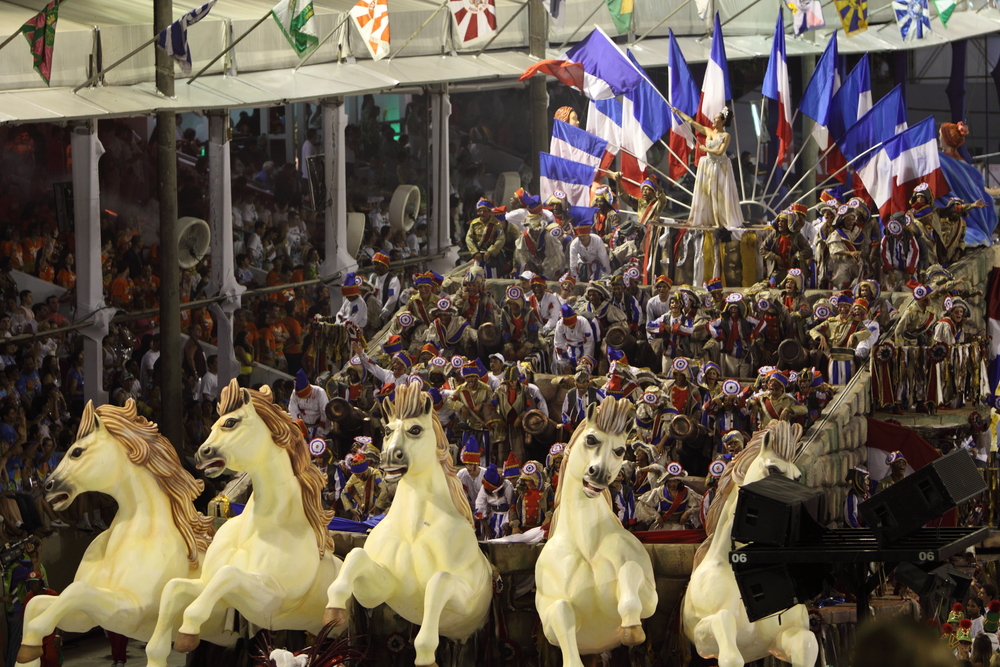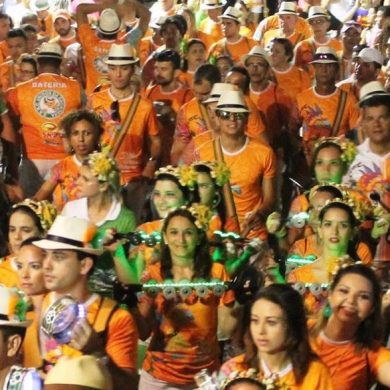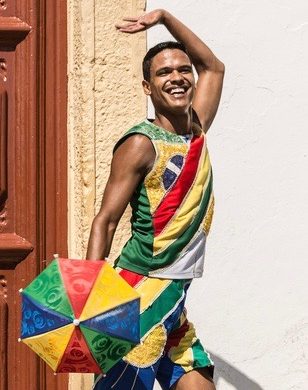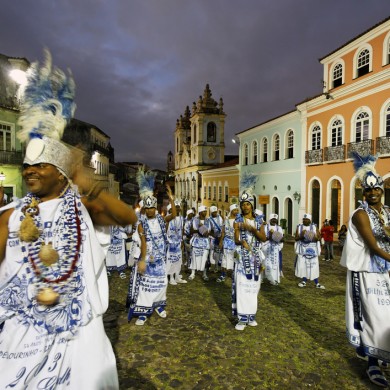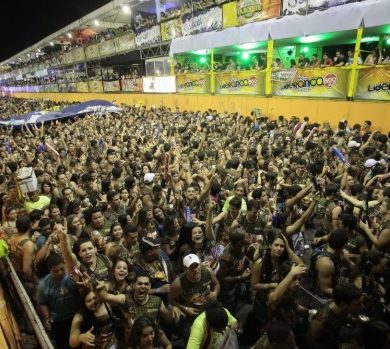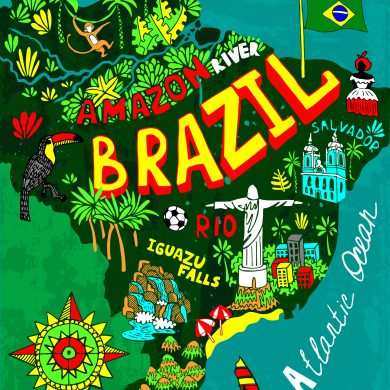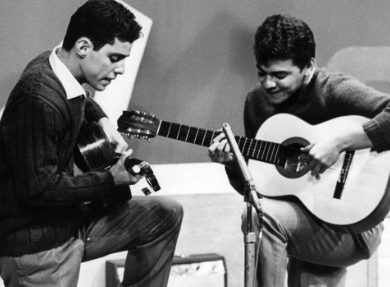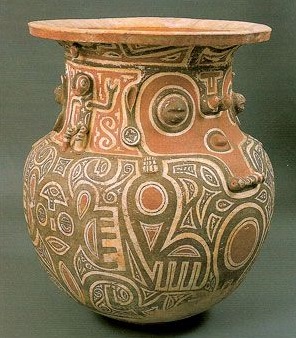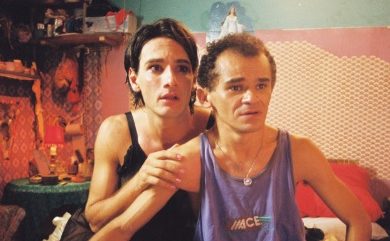Here is everything you need to know about one of the biggest parties in the world.
Carnival in Brazil is a major part of Brazilian culture, where the optimism of a better future for all citizens of the country manifests itself. Carnival starts on the Friday before Ash Wednesday and ends on Ash Wednesday at noon. The “spirit of joy” of the party is frequently extended before and after the main event with parties such as micareta and pré – carnaval. Here you can learn about the origins and history of what is now one of the biggest celebrations on the planet!
Also, have a look at our pages exploring the various types of carnival in Brazil which are unique in the style of music played, the costumes worn and the atmosphere enjoyed by the public.
Explore the different types of carnival in Brazil
The Origins of Carnival
The origins of carnival (carnaval in Portuguese) in Brazil are rooted in Christian tradition. As the biggest catholic country in the world, Brazil has many other Christian holidays throughout the year, some of which are public holidays and some of which aren´t. Examples include Good Friday (seixta-feira da paixão) on the last Friday before Easter, Easter (páscoa), Corpus Christi and All souls day (dia dos finados) on the 2nd of November.
Lent is a period of religious observance for Christians that begins on Ash Wednesday and ends on Holy Saturday. The Catholic Church remembers the 40 days and 40 nights that Jesus Christ spent fasting in the desert through fasting and abstinence during this period of roughly six weeks. Similar to other celebrations before lent, carnival was originally a festival of food. As preparation for the 40 days of fasting that would start on Ash Wednesday, people feasted on meat and other food in the days leading up to the start of the fast. It is maintained that this practice was originally established to use all of the food so it would not go off during the Lenten period as meat was prohibited during the observance.
The word “carnaval” is said to be derived from the Latin term “carnem levare” which means “remove the meat.” The etymology is interpreted by some as referring to the meat which would be “taken” or used before Ash Wednesday, others claim that the phrase is referring to the carefree spirit of the festival in that the celebrations allow you to be released from your bodily flesh. The first carnivals were celebrated in Italy and similarly to today, consisted of people enjoying themselves, playing music and dressing up. This type of celebration then spread to the rest of Europe – France, Spain, Portugal and eventually to the Americas and Brazil. Brazilian historians claim that the first carnival style celebrations in Brazil were in Rio de Janeiro. These celebrations were known as Préstitos and were similar to modern carnival in that there was music and processions in the streets. It is claimed that the first took place in 1641, to celebrate the crowning of John IV of Portugal.
History of Carnival in Brazil
Modern carnival in Brazil is also attributed to European influence during the colonial years, specifically the Portuguese celebration of “entrudo.” This was adapted by the poorer population of Brazil who celebrated by running in the streets throwing balls of flour and water at each other. They would also paint their faces and dress up for the occasion. (Carnival today still maintains a similar tradition through “mela mela” when people take to the streets to throw flour at one another.) In the early days, the upper class did not join the entrudo, preferring to stay inside, if only to throw flour from their high windows at the working class population below. Entrudo was considered an unruly celebration and was eventually banned in Rio de Janeiro in the nineteenth century. During this period the upper classes began to host “bailes de carnival” in theatres and dancehalls. Around this time they also began to form societies to organize the parties. The first was called “Congresso das Sumidades Carnavalescas” who started the parades on the streets. This did not deter the working class population however and they continued with their celebrations.
Eventually, both the working class and the upper class would parade on the streets once a year. Carnival “chords” were used to try and police the crowds. These are the origins of the long ropes we see today separating the followers of the floats and the onlookers standing along the street. The elite would parade along the streets in their cars (which eventually led to the tradition of the carnival floats). There were displays of other art forms including capoeira and different musical styles brought by the eclectic mix of people, characteristic of Brazil.
Musical carnival processions started in the 19th century. Musicians such as Chiquinha Gonzaga became successful with hits like “abre-alas.” Samba was born around 1910 with “pelo – telephone” by Donga being the first Samba record to be recorded in Brazil. Carnival became a musical event – Afoxé became the dominant style in Bahia, whilst Frevo conquered Recife and Maracatú reigned in Olinda.
The samba schools initially emerged among the working classes in the 1920´s. The first were called “Deixa falar” and “Vai como pode” in Rio de Janeiro.
After the 1960´s carnival in Brazil went through a certain gentrification. The samba schools in Rio de Janeiro started to garner the support of businesses and sponsors, turning into more of a commercial activity than before. During this period, the city council of Rio de Janeiro started to put stands along the streets, mainly Avenida Rio Branco, and started to charge entry to see the schools parading. This also occurred early on in São Paulo. A huge step in the commercial direction came in 1984 when the first “Passarela do Samba” was ordered by then governor Leonel Brizola. It was designed by reknowned Brazilian architect Oscar Niemeyer and became the Sambódrome of today, one of the most important aspects of carnival in Brazil.
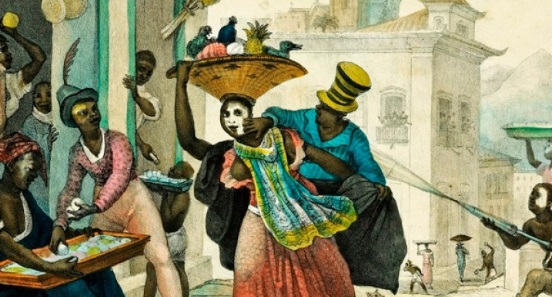
A closer look at Carnival in Brazil
Blocos
Blocos came about when groups of people living in the same neighbourhoods came together to plan parties during carnival. The origins of the bloco lie with the “cordoes” in the late 1800´s. These were groups of friends who came together to play at different locations throughout the cities. As the movement grew, people began to form bands according to their neighbourhoods. These bands became known as blocos. The first blocos that were recognized and permitted by authorities in Brazil were in 1889 in Rio de Janeiro. These included blocos such as “bumba meu boi”, “estrela da mocidade” and “coracões de ouro” among others. In those days the blocos were seen as the wildest carnival manifestations as opposed to the balls that members of the upper class were accustomed to. Eventually some blocos came to be known as samba schools after the 1920´s and 1930´s.
Today, you will find hundreds of blocos all over the big cities in Brazil. During carnival they will have an allocated time and place to play (usually the same every year) and carnival participants will flock to see and participate in the festivities. They usually consist of a drumming section, a band and a conductor at least. Some people have an affinity to certain blocos and will follow them throughout the year including for rehearsals etc.
Types of bloco
There are some broad categorizations that group the blocos into types. Although nowadays less prominent, most blocos fit into one of the following main categories.
Bloco Afro
The Afro blocos, play African inspired music and sing lyrics that pay homage to African culture and Afro – Brazilian culture. These types of blocos are popular in Salvador and they play alongside the trio eletricos using mostly percussion instruments. The fancy dress for these blocos consists of outfits with African inspired designs, headwear and full costumes. The first Afro bloco in Brazil was called “Ilê Aiyê.” It was founded in 1974 for carnival in Salvador. Samba – reggae is a popular style of music played by these blocos and the Afro blocos are partly responsible for its popularization. Maracatú and Axé are also popular styles of music played by these blocos.
Bloco de Enredo
Enredo translates roughly into “plot” or “story”. Many of the blocos de enredo were the ones that eventually turned into samba schools. Similar to samba schools, their performances tell a story. Normally, they will depict scenes from history, the life of someone famous or try to capture a particular theme. These blocos could be considered one step down from a samba school. In fact, during Rio carnival in 2011 the last four samba schools in the sixth division became classed as blocos. However this only lasted until 2014.
Bloco Lírico
These blocos are typical of carnival in Pernambuco, mainly in Recife and Olinda. The music consists of “frevo,” lyrics and a style of music particular to the locality. The lyrics are accompanied by a wood and string orchestra. These kinds of blocos were born in 1850 and their extravagant dress and frevo rhythms set them apart.
Bloco de Sujo
These are known as the wildest blocos during carnival in Brazil. Popular amongst the student population, the costumes are usually improvised and even the compositions of the music. People will bring all sorts of instruments and get together during carnival to parade through the streets of the city. These are the types of bloco where you are most likely to see political banners and protests signs, usually against the Brazilian political establishment and with some element of satire.
Bloco das Piranhas
These kinds of blocos are characterized by the male participants dressing as women. Usually, in quite extravagant and feminine outfits. These kinds of blocos are so popular that in São Paulo, one ended up becoming a samba school known as “Mocidade Alegre”.
Rivalry between the biggest blocos – Cordão da Bola Preta and Galo da Madrugada
Galo da Madrugada is a carnival bloco from Recife in Pernambuco. It was created by Enéias Freire in 1978 and have since paraded in the São José neighbourhood of Recife every Saturday of the carnival period. They play mostly “frevo.” In 2013 the number of participants following the bloco was 2 500, 000 people and they hold the Guinness World Book of Records for the biggest carnival parade in the world.
Cordão da Bola Preta also parade every Saturday in the carnival season except they are based in Rio de Janeiro. It was founded in 1918 and they play a mixture of music, but mostly “marchinha.” It is said to be the biggest unofficial carnival parade in the world. This has resulted in a rivalry between the two blocos, each one considering themselves biggest. In 1990, Galo da Madrugada entered the Guinness World Book of Records as the biggest carnival parade in the world with 1.5 million participants. In 2000, Cordão da Bola Preta managed to gather 2 million followers. Galo da Madrugada also claims to have reached this number after their Guinnes World Record, so they continue to dispute who is in fact the biggest. In terms of official recognition, Galo da Madrugada from Recife hold the title.
Samba Schools
Samba schools are the name given to the clubs that organize the massive parades that move through the cities during carnival in Brazil. They are mostly associated with a particular neighbourhood and members spend the entire year practicing for carnival, the samba school´s main event. Although there are some other events throughout the year at which they will perform, samba schools are considered the headline act of carnival in Brazil. The first samba school was called “Deixa Falar” and it was founded in 1928. The first samba school competition was in the same year, held in the home of Zé Espinguela in Rio de Janeiro. The development of the samba competitions that we see today began when Mário Filho, the owner of Mundo Esportivo sponsored a samba schools parade at Praça Onze in Rio de Janeiro.
Some popular composers at the time suggested having a parade during carnival and this was supported by owners of local newspapers. Along with the journalists from the newspapers, 19 samba schools turned out to the event for which the newspapers made the rules. This tradition remains today with the media still having a role in judging the schools who parade during carnival. The winning school was Mangueira who are to this day one of the most successful samba schools in Rio, winning the competition twenty times and taking the runners-up prize another twenty.
Over the years, the samba schools started to adopt traditions from other carnival groups and celebrations such as the “enredo” (plot) and the flag bearer. The phenomenon of samba schools began to spread outside Rio de Janeiro in 1935 when Primeira São Paulo was established in the city of São Paulo. In 1984, Rio gained its very own dedicated place to host the samba schools parade during carnival, called Sambódromo Marquês de Sapucaí or Sambadrome in English. Nowadays, other cities in Brazil have their own dedicated Sambadromes including São Paulo and Manaus.
Structure of Brazilian samba schools
Despite the carefree attitude and focus on celebration during carnival in Brazil. The samba schools actually have a very organized structure. Here is a quick overview of how a samba schools is made up.
Comissão de Frente (front commission)
This is a small group of people from the school, usually consisting of about 10 participants who introduce the school to the crowds. They also serve the purpose of introducing the theme of the performance and to give the public a warm welcome. The rules dictate that each school must have a front commission and it must perform first. Traditionally, the front commission were the top organizers of the samba school who came dressed in their best clothes to introduce the parade, this was to try and dispel the reputation held among the upper class that the samba schools were reckless or violent.
Mestre-Sala and Porta-Bandeira
The Mestre-Sala and Porta-Bandeira are a pair of dancers who serve to fly the flag of the school. The Mestre-Sala´s job is to draw attention to the Porta Bandeira who is not dancing samba but dancing a different dance with more turns and twists. They are judged as part of the parade and must follow certain rules to achieve the highest scores. The choreography is closely judged and anything from simultaneously turning their backs to each other to a piece of a costume falling off can lose points for the whole performance. Each school may have up to three or four pairs of Mestre-Sala´s and Porto-Bandeira´s although only the first one is judged.
Floats and Props
Some of the most impressive parts of a samba school´s parade and performance are the massive floats. These are normally built of wood, styrofoam, plastic, paper and other materials. Despite their enormous size, it is prohibited to use engines to power the floats. The size limits for the floats performing in the special competition in Rio de Janeiro are eight meters and fifty centimetres wide by nine meters and eighty centimetres tall. The biggest floats are as tall as thirteen meters and can be as long as sixty!
Bateria (drum section)
The bateria is the drum section of the parade who set the pace of the performance and accompany the singer. The drum section can have anything from 200 to 300 performers. Instruments include: surdo (bass drum), repinique (tom-tom), chocalho (shaker), tamborim, cuíca, agogô, reco-reco and frigideira.
Rainha de bateria
The rainha de bateria is the queen of the drum section. Samba schools may have other related roles such as the princess and the godmother of the drum section. The role is used to pay tribute to women and is often appointed to highly regarded members of the community and even celebrities. The godmother of the drum section plays a similar role to the queen but is more often chosen from women who are from within the community of the school and can be frowned upon if chosen from outside (simply duplicating the role of the queen).
Ala das Baianas and Velha Guarda
The Ala das Baianas (the row of Bahians) is considered one of the most important aspects of the parades composition. It is made up of more mature women dressed in traditional Bahian clothing. It was brought into the parade in the 1930´s to pay homage to the ladies who housed the samba performers in their homes when the musical style had a negative reputation. The costumes worn by the row of Bahians score points for the parade.
The Velha Guarda is usually made up of the oldest members of the school. These members may have served important roles in the past but have since “retired”. They are usually well dressed in zoot suits and panama or bowler hats.
Singer
The singer is responsible for leading up the vocal section of the samba school. They are usually backed by a group of backing vocalists. It is their job to help arouse the rest of the school who are all supposed to be singing and to help the crowd interpret the meaning of the parade.
Carnavalesco and Directors
The carnavalesco is normally a professional who is responsible for designing and developing the samba school´s parade. His job is to coordinate everything from the construction of the floats to the selection of the plot for the performance.
The directors of the school include the president and the patron of the school. They are at the top of the organization and have a role in almost all the decision making. This is commonly a paid role.
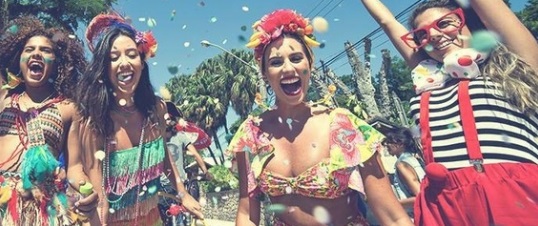
Competition Results and Champion´s Parade
In Rio de Janeiro the winners of the carnival parade are announced on the afternoon of Ash Wednesday, in São Paulo on the Tuesday of Carnival. The sambadrome is also used to announce the results and members representing each school will be there to calculate points as they are being announced. This event is also open to the public usually at a cheap price.
The champion´s parade is when the champions of Group A and the top 5 schools of the special group perform their parades once again. This time there is a less competitive atmosphere which allows the foliões (anyone participating in the parade) to enjoy carnival as well! Sometimes the champion´s parade is used as a platform to protest the results of that year´s competition with banners and signs.
Trio Elétricos – The heartbeat of carnival in Salvador
In the 1950´s in Salvador Tríos Elétricos were born when musicians got on the back of old trucks to play whilst the truck moved through the city. The original trio elétrico was formed by Dodô (Adolfo Antônio do Nascimento) and Osmar (Álvarez Macedo), who were a musical duo that pioneered amplified string instruments in Brazil. They even invented their own instrument, considered the first Brazilian guitar, known as the “pau elétrico” which is a kind of electric guitar with either four or five strings. The strings are tuned to GDAE or CGDAE. It came to be known as the “guitar Bahiana” or “Bahian guitar.” During the carnival of Salvador in 1950, Dodô and Osmar mounted their amplified instruments on the back of a Ford 1929 which had “A Dupla Elétrica” (the electric duo) written across the back.
They drove through the city playing their music and were well received by the crowds. The next year they invited Temístocles Aragão to play along with them, forming the first Trío Elétrico in 1951. Following their huge success, Fratelli Vita (a refrigeration company) sponsored a truck for the performance, it was beautifully decorated and ready to receive the artists and their instruments. Thus was born the Trío Elétrico we see used during carnival in Brazil to this day. In 1979 Morais Moreira added the afoxé drum section onto the trio elétrico, the same format is used during carnival in cities all over Brazil.
Going to the blocos and street parties at carnaval
Apart from the famous Sambodromo of Rio de Janeiro and the massive trio elétricos in Salvador, there is a lot more to carnival in Brazil! These massive block parties that occur in most of the main neighbourhoods throughout the city are also the life of carnival. You need to know how to navigate these parties as there are many written and unwritten rules that must be followed so you can fully enjoy your time and really get into the spirit of carnival in Brazil.
First of all, know when and where the bloco is taking place, usually the city council will have a schedule for all the registered blocos in the city which will be available to see online. Keep in mind that a lot of the blocos start bright and early, some as early as 8am! Brazilians have been preparing for carnival for months, so get your costume on and get ready to party early. The “concentração” is the meeting time for the bloco. You want to be arriving as close to this time as possible.
Some blocos will have a “trajeto” or trajectory. This means there is a path the bloco will follow (and you too!). Other blocos exist which are “parado” (stopped) and these parties remain in the same place. As a rule of thumb the moving blocos are usually a little more hectic and it is easier to get lost. However, it is fair to say that the moving blocos really embody the spirit of Brazilian carnival and are certainly the wildest moments you will have during the holiday. Ideal if you are in a smaller group as it can be difficult to keep everyone together. If you prefer to have the toilets nearby, access to the bar and the ability to chat to your friends without too much difficulty, then the stationary bloco is probably better suited to you.
Some blocos will have a theme or a particular type of fancy dress, there is even a super-mario bloco in Rio de Janeiro! It is always better to come prepared in fancy dress, especially if the bloco has a particular theme. However it is not necessary. Most blocos will play a range of music but the bands will have their preference. A popular format is plenty of samba with some MPB, marchina and even rock included! The samba bands usually put on a spectacular performance, sometimes with hundreds of drums and other percussion instruments playing together. Everything is conducted by a “mestre de bateria.”
Once you have chosen where you will go you will need to decide how you want to enjoy carnival. You can buy a ticket for a camarote which are private areas along the carnival route. These range from small areas with some extra breathing space and a toilet, to large stands with luxury bars, toilets, televisions and even hot tubs! Tickets can be expensive and scarce for the better ones so organize this early or get your tickets online beforehand. Otherwise you can buy an abadá which will allow you to enter the roped off areas of the blocos and follow them along the route. Your other choice is to move along the sides of the parade with most of the public, this is known as “pipoca” or popcorn to the locals.
Safety at Carnival in Brazil
Carnival is a time of celebration and joy, it has the potential to be the party of a lifetime! However, the carefree attitude during the celebrations can sometimes leave people vulnerable to pickpockets and petty theft. Also, the sheer amount of people can make it difficult to stay in a group of friends. Here are some pieces of advice to help you stay safe during carnival in Brazil and allow you to enjoy it to the fullest!
Set meeting points with your friends in case you get separated, it can be difficult to use mobile phones because of the vast amount of people and they are better kept away when you are in large crowds which can sometimes be targeted by thieves.
- Be wary of people who use the carefree atmosphere of carnival to become sexually aggressive towards others, try not to walk alone in the quieter areas.
- If you are buying food and drinks from the street, (which are much cheaper than from the bars) make sure any cans of beer you buy are unopened. Also if buying caipirinhas or cocktails make sure they are made in front of you. Although it may be tempting to eat the ice because of the heat, this is best avoided.
- Only carry essentials with you. If you can, try to avoid wearing expensive watches and jewellery. Some people swap their phones for an old one in case it gets lost. Make sure you have some cash, a phone and a copy of your ID with you.
- Watch out for ticket scams when buying entry into blocos and camarotes, always buy from licensed dealers and check the dates on your tickets/abadá.
- Try not to overindulge in alcohol. Although carnival is a time of celebration, going over the top can ruin your day and even put you at risk. Enjoy yourself responsibly!
Micareta, the off-season Brazilian Carnival
Born in Feira da Santana, Micareta (“Mid-Lenten Feast”) is one of the most popular fora de epoca (“out of carnival”) events in Brazil. Similar to carnival it largely involves large street parties, music and celebrations.
Pré-carnaval, preparation for the main event
Starting 2 to 3 weeks before the main carnival, the Brazilian Pré -carnaval allows blocos, bandas and samba schools to prepare their official performances. It also gives everyone else an extra chance to party!
Carnival at Recife and Olinda enriched by “Frevo”
Carnival in Recife and Olinda, (two ancient colonial cities), is distinguished by its Brazilian and African influences. Picturesque, convivial, but also moving, it has an important place for frevo, a dance with frantic rhythms, symbolic of the political and racial struggles of Nordeste.
Salvador de Bahia, the biggest carnival in the world!
Carnival in Salvador de Bahia is the biggest and busiest carnival in the world. The party often lasts from January to March and has an electric atmosphere! It is organized around spectacular neighborhood parades and “trios elétricos.”
Rio, the world famous carnival of extravagance and Samba!
Famous all over the world, Rio de Janeiro’s carnival mixes public festivals and private balls throughout the city. The magnificent parade in the Sambadrome is a must-see!
